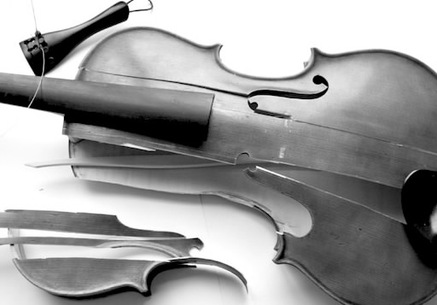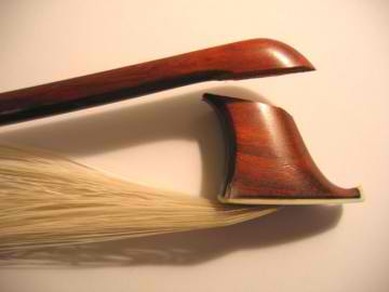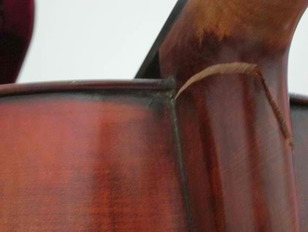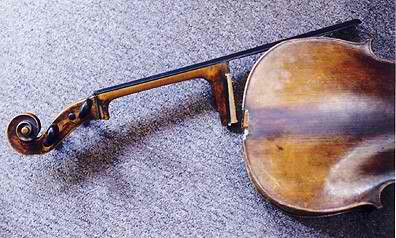This is my first post in a series concerning instrument care, so I decided to start with string instruments. A lot of times classrooms can be too hectic to go over all of these in details and its good for parents to know how the instruments should be cared for so they don't end up with large repair bills.
General Care for all String Instruments
- Since string instruments are made out of wood, they expand and contract due to changing temperatures, humidity, and air pressure. Cracks in the wood often occur when these elements change too quickly. Instruments should always be stored somewhere cool and dry. Never in a basement, garage, or attic. You should also avoid placing an instrument directly in front of a heater or A/C. Bedrooms, studies, and family rooms are ideal.
- Whenever traveling, if you know you are going to encounter one of these changes, such as bringing it aboard an airplane or driving over mountains, its best to loosen the strings a little and make sure the pegs can turn freely. Its also never a good idea to leave an instrument in a car that is turned off during the summer and winter months.
- Don't expose a string instrument to direct sunlight, it can ruin the varnish and finish.
- If you do notice a crack or open seam on your instrument, bring it to a repair shop immediately to be fixed and never try fixing it yourself. Repair shops use a special glue that won't cause further damage to the instrument and waiting will only allow the crack or open seam to get worse, which results in more time and money spent fixing the repair.
- Avoid touching the hair on the bow with your hands. The oils from your hands will seep into the bow hair and drastically reduce the quality and life span of the hair. This will result in more frequent re-hairs.
- When the bow is taken out of the case, rosin should be applied to the bow for about 30 seconds once a day.
- The bridge is the most fragile part of the instrument. It is not glued on and only held in place with pressure from the strings, so it can be knocked over or out of place with minimum force. Also pressure should never be applied to the top of the bridge, because it can break easily. This means that instrument should never be placed face down on any surface.
Care for Violins and Violas
- The bow should always be loosened before being put away. If the tension on the bow isn't released and there's a temperature or humidity change it can cause the bow to break at the tip. When put in the case, the bow should always be locked into place so it doesn't fall out and scratch the top of the violin/viola when the case is shut.
- The safest place to keep a violin or viola is in the case. Always exercise caution when setting down an instrument thats not in a case. Avoid setting a violin/viola on the floor or on a chair, because it can be easily stepped or sat on. Make sure the instrument is always laid on its back and not face down or on the side.
- After playing, take a dry cloth or rag and wipe all the rosin off the body, strings, and fingerboard. When placing the violin/viola back in the case make sure it is strapped in and the case is locked to avoid having it fall out of the case.
Care for Cellos and Basses
- Same as the violin and viola, always make sure to loosen the bow before putting it away in case of temperature or humidity changes. When using a soft case, take the bow out of the case first and put it back in the case last. This will avoid having the instrument crush the bow when trying to get the instrument in and out of the case.
- Also when using a soft case, the scroll (top) of the instrument always goes in first and comes out last. This will avoid ripping the case.
- When setting a cello or bass down, since the instrument is bigger its okay to set it on the floor as long as its out of the way. Also always set it on its side, never on its back or front. Make sure the endpin is out of the way and its usually a good idea to retract the endpin when setting it down so no one trips over it.
- After playing, take a dry cloth or rag and wipe all the rosin off the body, strings, and fingerboard. Make sure the case it properly latched or zipped all the way and place it out of the way. Take extra precaution when finding a place to store an instrument in a soft case. Damage such as broken necks or bridges can still easily occur if the case is knocked over or stepped on.




 RSS Feed
RSS Feed


